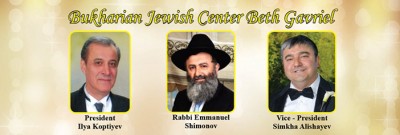

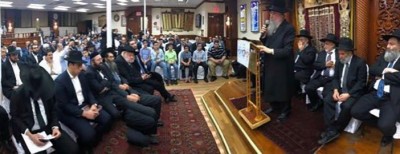
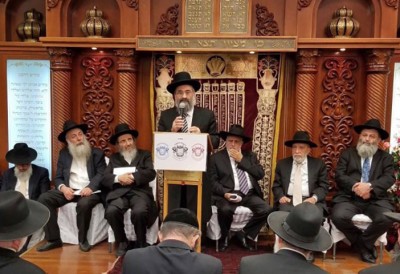
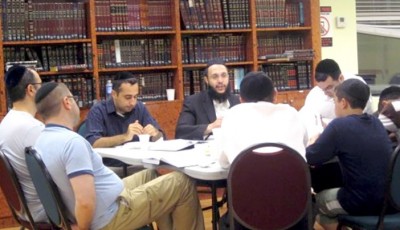
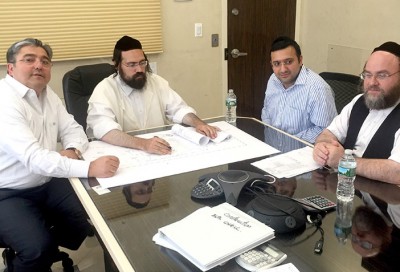
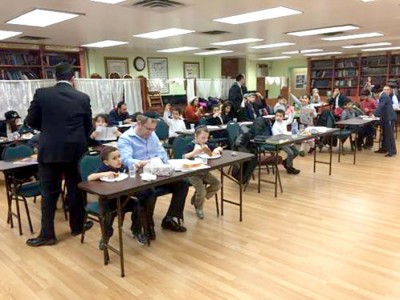
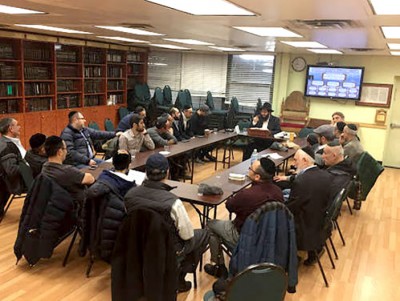

It’s not often that I do something like this; in fact, I don’t ever remember doing it before. Our sages teach us that it is important to say little and do much. We learn this from our forefather, Avraham Avinu, of blessed memory. Our sages also tell us that Avraham Avinu is the pillar of Chesed in this world. This is not a symbolic title based on his past behavior, but rather, a descriptive title as true today as in the past. Because Avraham Avinu reached the highest level of Chesed possible by any human being, he does not merely represent Chesed, but actually defines it. Practically speaking, this means that anytime you are wondering about how to do Chesed, you simply need to ask yourself, “What would Avraham Avinu do?” Let’s develop this idea further.
Rabbi Eliyahu Dessler was a great rabbi from the last generation. His teachings were recorded in a Sefer (book) probably sitting on the shelves of every Bet Medrash across the world; it is called Michtav Mi’Eliyahu. In this book, there is a section where the Rav instructs the reader to prepare for Yom Kippur by meditating on deep ideas within the Yom Kippur ‘Viddui (Confession)’. In this prayer, Harav Dessler defines the phrase of ‘Sinat Hinam (Hating a fellow Jew)’ in a most interesting way. He teaches that root of ‘Sinat Hinam’ is looking at another person as an opportunity for taking rather than giving. The profundity of Rav Dessler’s teaching can be understood using our own context as an example.
Western society today in so many ways espouses, and even praises the opposite belief. If one thinks in any way other than the one above, he is considered naïve, at best. We are taught that the most important question today on so many levels of our society, upbringing, and business life is the following: What can you do for me? Of course, this is not the place to argue about the nuances of altruism. However, there can be no doubt that popular culture goes against the grain of Jewish values in this regard. Over the years, our many great Rabbanim have warned us not to be swallowed up by this backwards culture. But now that we find ourselves already enmeshed in the culture, the question becomes: What does the Torah expect of us when it comes to our social relationships, and exactly how integral are those expectations for us to succeed as a nation?
There is a famous passage in the Talmud which states that in every generation where the 3rd Temple is not rebuilt, it is as if that generation is responsible for its destruction. As we all know, the 2nd Temple was destroyed because of the sin of ‘Sinat Hinam’. Our Sages explain that in every generation, we have the opportunity to fix this wrong and realign ourselves with the Torah, which commands us to follow the path of our Forefather, Avraham Avinu. Avraham Avinu is the paramount role model in this regard. He treated people as opportunities for giving. This character trait is therefore directly connected with a promise given to our nation long ago.
All of our Holy Prophets promised us that the day will come when our nation will merit the Final Redemption. There is a discussion in the Talmud of exactly how this will take place, but the Prophet Micha makes it clear that one certainty does exist. After many years and many tribulations, the Jewish nation will return to Hashem and the ways of the Torah. Now, since we know that the reason for our Exile is Sinat Hinam, its abolition must play a critical role in our Final Redemption.
As we said above, Rav Dessler has taught us that Sinat Hinam is not so much an action as much as it is a mindset. A nation is made up of individuals, and so every person has the task of recalibrating his values to match the Torah’s. Do we see this happening? Can we point to any trend which signifies the awaited end Sinat Hinam and our long Exile? It is a well-known fact that over the past few years, Harav Chaim Kanievsky has said multiple times that we are on the ‘doorstep of Moshiach’. Harav Chaim is one of the Gadolei Hador, who is well known for his limited use of speech. Why would he repeat the same message over and over? What is it that he sees? Is there something unique about our generation? If we look to the Torah, the answer might be visible for us all.
One of the most astounding movements in the Jewish Nation over the past 50 years is the unparalleled Teshuvah movement sweeping the children, teenagers and adults. Never before in our history, do we have record of such a movement. Actually that’s not exactly accurate. The Torah and Talmud tell us that there was once a great King of the Jewish people named Chizkiyahu. We are told that in his time, there was an unparalleled rebirth of true Torah Judaism. The Talmud paints this with a vivid fact: the nation was so learned that one could find extreme erudition of even the most difficult legal sections on the tongues of young children! The Talmud tells us that King Chizkiyahu was primarily responsible for this rebirth, and was even slated to become the Messiah. But he wasn’t. The Talmud states that for a cryptic reason known to Hashem, he would not fill the role.
Today, things are different from the times of King Chizkiyau. The Teshuva movement has taken a different form, one based on the mentality of our Forefather Avraham Avinu. Torah is now available for all peoples, at all times, and in all kinds of places. You can hear Torah online and attend the never-ending variety of shiurim in person. But this rebirth did not occur without great effort. It all began with the work of some of the finest shuls. One of those shuls is Beth Gavriel.
Beth Gavriel is of course not the only shul responsible for the Teshuva movement exploding around America or in Queens, N.Y. But those who are familiar with Beth Gavriel would not be surprised to discover that many of the key figures in dispersing Torah around the world (!) are connected to it by root in one way or another. The question that I had for a long time is ‘why’? What is it about the place that makes it such a factory for change in the Jewish community? What I think to be part of the answer hit me on the head about two weeks ago. I want to share a true story with you, even though it points to certain people, because it is an important story which demonstrates the Ahavat Achim (brotherly love) necessary to produce positive change.
A short time ago, the Queens Bukharian community was hit with a very difficult situation, which affected the hearts of many Bukharian Jews. But there was a small group of people who needed the most help. During this time, I received a phone call asking to help arrange for the help to come through. My organization was galvanized into action, and after an interesting series of events, we were able to get the help from no less than the American Ambassador to Jerusalem, Mr. David Friedman. However the point in sharing this story is the identity of the person who called me over the phone. He is someone who, no doubt, is extremely busy with many community and personal matters. Nonetheless, he saw it as his responsibility to not only pick up the phone and help, but also send me all the necessary documents and data, which meant tracking it all down in what was a very hectic and short time.
This person is the Vice-President of Beth Gavriel, Simcha Alishayev. One should not sing a person’s praise, and I had the pleasant experience of working with many other sincere lay leaders from many communities. But I share this story because I was personally involved in it, and can therefore testify to the great initiative taken and responsibility shouldered. If you look around you at and examine all the successful Jewish communities in America, you will likely find that most of them began and continue to grow because of the immense personal effort expended by the community members and leaders. Nothing strong arises without hard work, and true success demonstrates a real Ahavat Achim (brotherly love) amongst the community. It is this Ahavat Achim which dispels the fire of Sinat Hinam, and makes way for the tree of Torah to take root and spread its branches. When we focus on what we can do for others as opposed to what others can do for us, we bring light to the whole world.
We are right next to the day of Yom Kippur, and we have the opportunity to make some of the most important resolutions of our lives and the life of our nation. Our Exile has been long and bitter. Let us look to our Fathers, and they will inform us; our Elders and they will tell us. The Glory of our people is the Torah, which instructs us to love each other and look out for each other’s welfare. Let us focus on giving in any way we can. No one is perfect, but we can all begin somewhere. Let us look to those many, many role models, whether it is our parents, rabbanim, or community leaders, and let us make the decision to view each other as opportunities for giving, giving and more giving. Everyone according his own capabilities and talents. This is the way of Avraham Avinu; this is the way of our Torah Ha’Kedoshah, and in this merit, we will be redeemed. May we all merit and usher in the Geulah Shelemah, Speedily in our days, Amen.
By Adam Suionov
What Does Beth Gavriel Mean To You?
Typography
- Smaller Small Medium Big Bigger
- Default Helvetica Segoe Georgia Times
- Reading Mode




